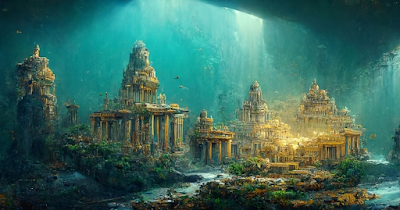 |
| Source - The Travel |
Cracking the Code - Indus Valley Civilization
The Indus Valley Civilization, flourishing between 3300 BCE and 1300 BCE, thrived along the Indus River and its tributaries. Major cities like Mohenjo-daro and Harappa showcase remarkable urban planning with well-laid-out streets, a sophisticated drainage system, and even granaries for storing food. These cities boasted multi-storied structures built with fired bricks, a testament to their advanced architectural prowess.
Undeciphered Script - A Silent Language
One of the biggest enigmas surrounding the Indus Valley Civilization is its writing system. Thousands of inscribed seals and tablets have been unearthed, but the script remains stubbornly undeciphered. Scholars believe it might be a syllabary, representing sounds rather than entire words. Deciphering this script would be a game-changer, unlocking a treasure trove of information about their society, religion, and daily lives.
Beyond the Indus Valley - A Panoramic View
While the Indus Valley Civilization is the most prominent, India boasts other lost cities waiting to be explored. Situated on the southern tip of the peninsula, Mahabalipuram, or Mamallapuram, was once a bustling port city of the Pallava dynasty. Carved from the granite cliffs, its magnificent temples and intricate sculptures offer a glimpse into the artistic mastery of the era. Further north, nestled amidst the Vindhya mountains, lie the ruins of Vidisha, an ancient city with a rich history dating back to the 6th century BCE. Excavations here have revealed remnants of palaces, temples, and monasteries, hinting at the city's past grandeur.
A Glimpse into the Lives of the Past
Archaeological discoveries are shedding light on the lives of the people who inhabited these lost cities. Evidence suggests a well-organized society with diverse occupations ranging from artisans and craftspeople to farmers and traders. They were skilled metalworkers, producing intricate jewelry and tools from bronze and copper. Harappa and Mohenjo-daro even had sophisticated drainage systems, indicating a keen awareness of sanitation and hygiene.
The Enduring Legacy
The lost cities of India are a powerful reminder of the rich tapestry of the country's past. These civilizations, though long gone, have left behind a legacy that continues to inspire and intrigue us. The ongoing excavations promise to unveil even more secrets, providing a deeper understanding of these ancient societies. As we unravel the mysteries of these lost cities, we gain a valuable perspective on the evolution of human civilization and the enduring spirit of innovation.
India's lost cities offer a captivating glimpse into the country's ancient past. If you're ever in India, consider visiting these archaeological marvels and witnessing firsthand the wonders of these bygone eras. Remember, the journey of discovery never ends – with every excavation, we inch closer to understanding the lives of those who walked these lands millennia ago.
Written by - Anushka Dabhade
This article has been authored exclusively by the writer and is being presented on Eat My News, which serves as a platform for the community to voice their perspectives. As an entity, Eat My News cannot be held liable for the content or its accuracy. The views expressed in this article solely pertain to the author or writer. For further queries about the article or its content you can contact on this email address - anushka.author16@gmail.com






.png)


0 Comments